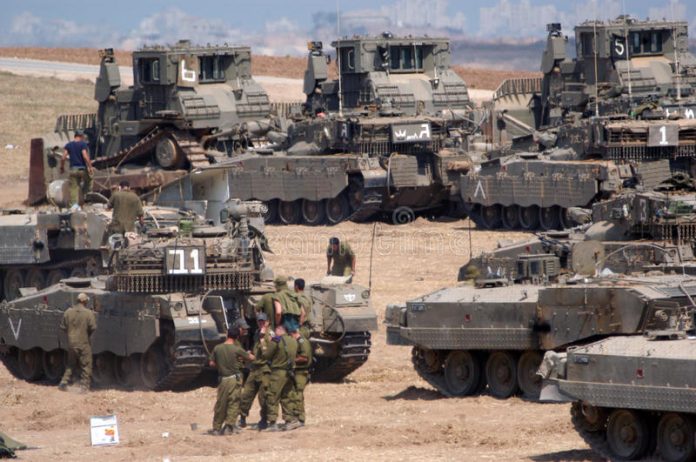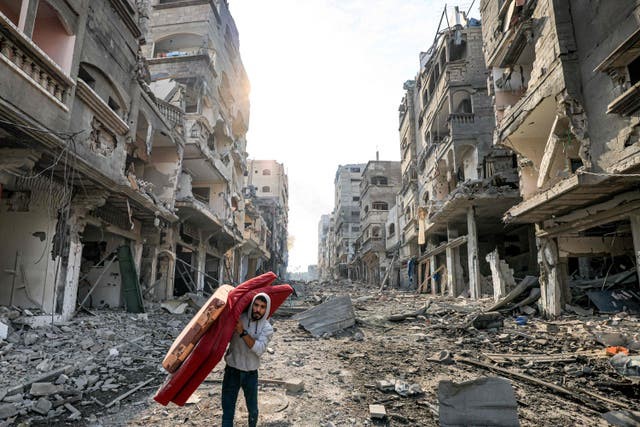News
Israeli Air Force chief: We’ll pave the way for ground troops into Gaza

“We are removing as many threats as possible regarding the land and the air,” said Israel Air Force Chief Maj, Gen. Tomer Bar.
Israel Air Force Chief Maj, Gen. Tomer Bar on Sunday said that the primary mission of the air force from this point on would shift to paving the way for ground troops to invade Gaza.

Bar stated, “We are laying the groundwork for the most effective possible ground maneuvers. We are removing as many threats as possible regarding the land and the air.”
“We will do what is needed in the most aggressive way such that if it is decided to maneuver [invade Gaza], we will enable the best possible land invasion, which will give our troops operational freedom,” added the air force chief.
Regarding balancing threats in the South from Hamas and in the North from Hezbollah, he said, “We are focused at this moment on fighting in the South, but are extremely ready and at high levels of preparedness for any developments in the North.”
Further, he said, “The air force, including all of its units, is distributed in a balanced way, and on war footing, to be able to respond with airstrikes and to attack wherever is needed.”
‘We are hurting, but we are fighting’
Moreover, he said, “the helicopter squadron conducted itself with determination against the enemy, and air strikes from drones killed many terrorists. Helicopters brought fighters to the area under heavy fire against them.”
“We are proud of them and of our reservists, who prove the power of the air force every hour,” said Bar.
Addressing the IDF’s failures on October 7 which led to Hamas’ initial successful invasion, he said, “We are hurting, but we are fighting…we are probing ourselves every day and improving every day. We will continue to act with all of our power until we achieve a decisive win.”
New details have also been revealed about the air force’s involvement in the early hours of the war.
The air force, like much of the military, was not involved in the first hour or so from 6:30 a.m. Saturday, but by around 8:30 a.m., helicopter units were providing support for gunfire and missile fire to residents at Beeri.
From Beeri, around five helicopters in the early hours were hopping from scene to scene, including: Nahal Oz, back to Beeri. Hulit, Nir Oz, Kerem Shalom, and a variety of areas right on the border fence.
Countless Hamas terrorists, both in vehicles and on foot, were picked off by these helicopters as they swooped through the region.
First responders didn’t have the full picture
However, in the first few minutes that they arrived, some helicopters had no idea what was going on and thought that they were helping with a minor incident where a border protest had gotten out of hand.
Even after providing initial support at Beeri, they did not all realize the scale of the invasion or the threat. In fact, when they left Beeri the first time, they thought they had successfully scared away a small group of invaders, whom they had just fired warning shots at to scatter them.
Only when they arrived at Nahal Oz and saw large numbers of Hamas invaders streaming across the border, did they “remove the gloves” and permit free open fire rules within the squadron on anyone who seemed to be associated with Hamas.
Even after that point, it was not easy for many hours, as Hamas terrorists were not a common sight on the Israeli side of the border, and helicopter pilots’ were not always sure who was Israeli and who was Hamas.
In one case, a helicopter fired warning shots to see how those on the ground reacted to seeing an IDF helicopter – if they waived in support or scattered in fear.
There was also a risk within a village of hitting Israelis unintentionally while firing on Hamas terrorists very close by.
In one specific case, a helicopter left Israelis in a rough situation in Hulit because there simply was no way to help without endangering those same Israelis.
This meant that the helicopters spent more of their time killing terrorists who were on their way in or out of a particular village and their power could not be used as decisively within a village battle.
In addition, helicopter units were used to help escort Shaldag and Shayetet 13 special forces units into the combat theater without being ambushed.
Even at the end of the day, helicopter pilots did not have the full picture, with some of them not even knowing about the dance party massacre until landing at their home bases.

























